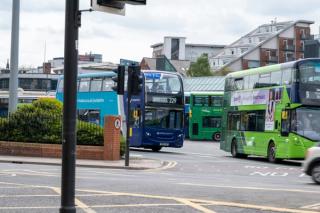
Wallingford EV charging hub
- Client Name
- Gem Property Group LLC
- Location
- Connecticut, USA

Challenge
The rapid uptake of electric vehicles (EVs) presented our client with the opportunity to provide the first high-quality Level 3 DC fast charging hub of its kind in the USA.
Gem Property Group wanted to deliver a groundbreaking EV charging experience and identified SLR as uniquely placed to advise on best-practice, technical design, regulatory, and cultural matters.
Adjacent to Interstate 91, the major north-south transport corridor connecting Connecticut, Massachusetts, and New York, the developer’s site sits at an important juncture for long-distance, regional, and local EV drivers.
Solution
SLR deployed its global EV infrastructure planning expertise and strong local knowledge to deliver a site design that addressed both local zoning requirements and the developer’s desire to deliver something new for the USA.
SLR analyzed the site conditions, traffic patterns, accessibility requirements, likely uptake and use of charging infrastructure, available technologies, optimal layout and mix of chargers, and provision of appropriate facilities for EV drivers.
SLR’s design specified the right number and type of chargers, site layout, and complementary uses including retail and food, to deliver a high-quality charging experience mirroring international best practice. To bring the hub into use, SLR presented evidence-based data to demonstrate to local officials the need and impact of the project, which led to changes to local zoning regulations.
SLR provided a detailed layout design, engineering drawings, traffic calculations and strategic use case for a 38-charger hub with 3,000 sq/ft of retail and supporting facilities.
Impact
This development will deliver a key charging facility on the I-91 corridor, supporting local, regional, and long-distance travelers on their transition to using EVs. The project represents a major step forward for Connecticut and the nation in its climate goals to quickly install public EV chargers and establish a national network of alternative fuel corridors. Moreover, this project demonstrates to other municipalities and planning agencies that EV charging hubs are not only viable but can be the basis for pleasing, profitable, and place-making establishments that benefit local communities and economies.

